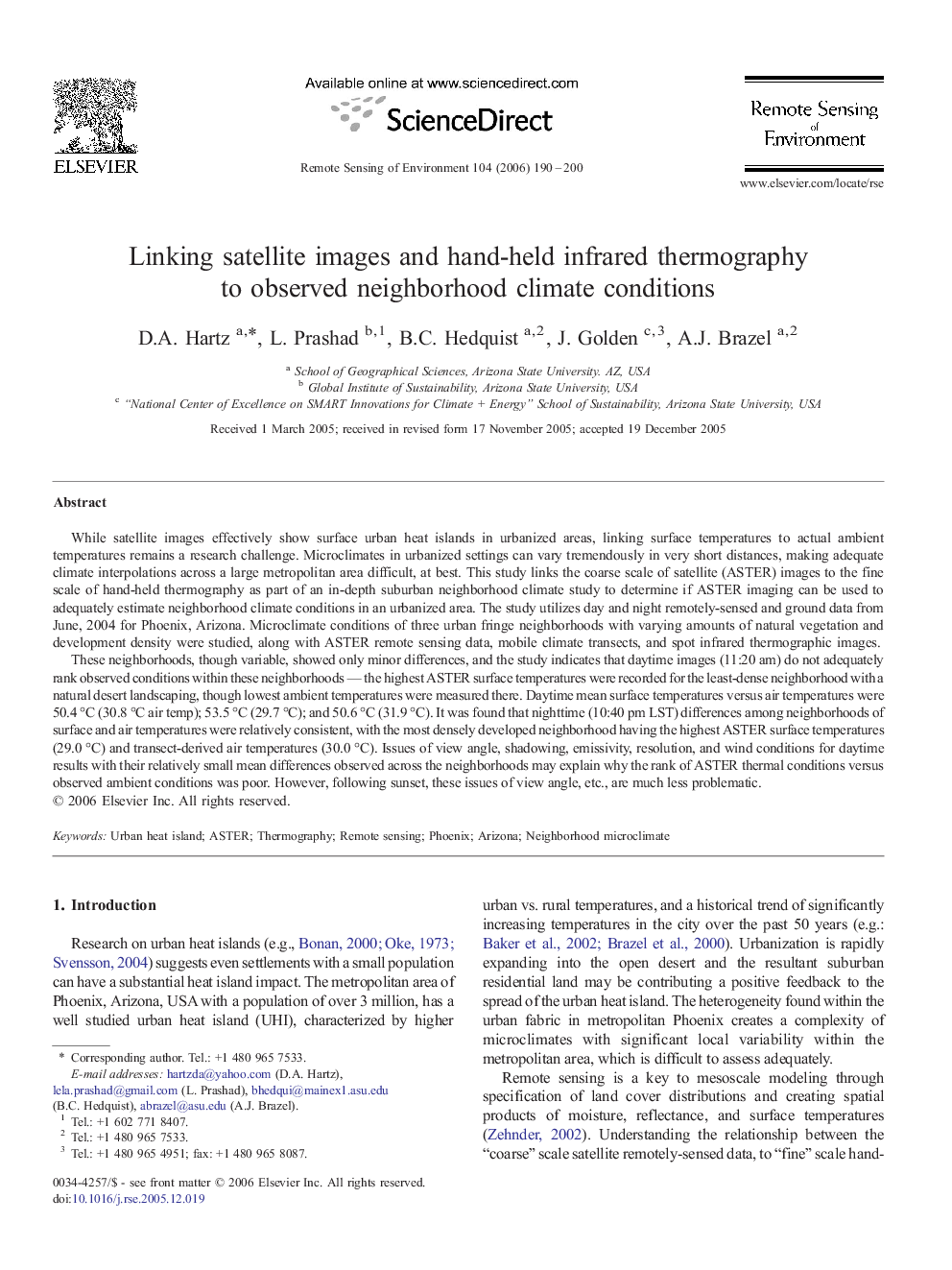| کد مقاله | کد نشریه | سال انتشار | مقاله انگلیسی | نسخه تمام متن |
|---|---|---|---|---|
| 4461125 | 1621362 | 2006 | 11 صفحه PDF | دانلود رایگان |

While satellite images effectively show surface urban heat islands in urbanized areas, linking surface temperatures to actual ambient temperatures remains a research challenge. Microclimates in urbanized settings can vary tremendously in very short distances, making adequate climate interpolations across a large metropolitan area difficult, at best. This study links the coarse scale of satellite (ASTER) images to the fine scale of hand-held thermography as part of an in-depth suburban neighborhood climate study to determine if ASTER imaging can be used to adequately estimate neighborhood climate conditions in an urbanized area. The study utilizes day and night remotely-sensed and ground data from June, 2004 for Phoenix, Arizona. Microclimate conditions of three urban fringe neighborhoods with varying amounts of natural vegetation and development density were studied, along with ASTER remote sensing data, mobile climate transects, and spot infrared thermographic images.These neighborhoods, though variable, showed only minor differences, and the study indicates that daytime images (11:20 am) do not adequately rank observed conditions within these neighborhoods — the highest ASTER surface temperatures were recorded for the least-dense neighborhood with a natural desert landscaping, though lowest ambient temperatures were measured there. Daytime mean surface temperatures versus air temperatures were 50.4 °C (30.8 °C air temp); 53.5 °C (29.7 °C); and 50.6 °C (31.9 °C). It was found that nighttime (10:40 pm LST) differences among neighborhoods of surface and air temperatures were relatively consistent, with the most densely developed neighborhood having the highest ASTER surface temperatures (29.0 °C) and transect-derived air temperatures (30.0 °C). Issues of view angle, shadowing, emissivity, resolution, and wind conditions for daytime results with their relatively small mean differences observed across the neighborhoods may explain why the rank of ASTER thermal conditions versus observed ambient conditions was poor. However, following sunset, these issues of view angle, etc., are much less problematic.
Journal: Remote Sensing of Environment - Volume 104, Issue 2, 30 September 2006, Pages 190–200